Rachel Davison Humphries on the Bill of Rights Institute and the Importance of Civics Projects
Key Points
-
Civics education should be integrated across all subjects to foster democratic skills and dispositions in students from an early age.
-
The Bill of Rights Institute provides extensive resources and professional development for civics teachers to help them navigate the complexities of modern civics education, especially during challenging times like election cycles.
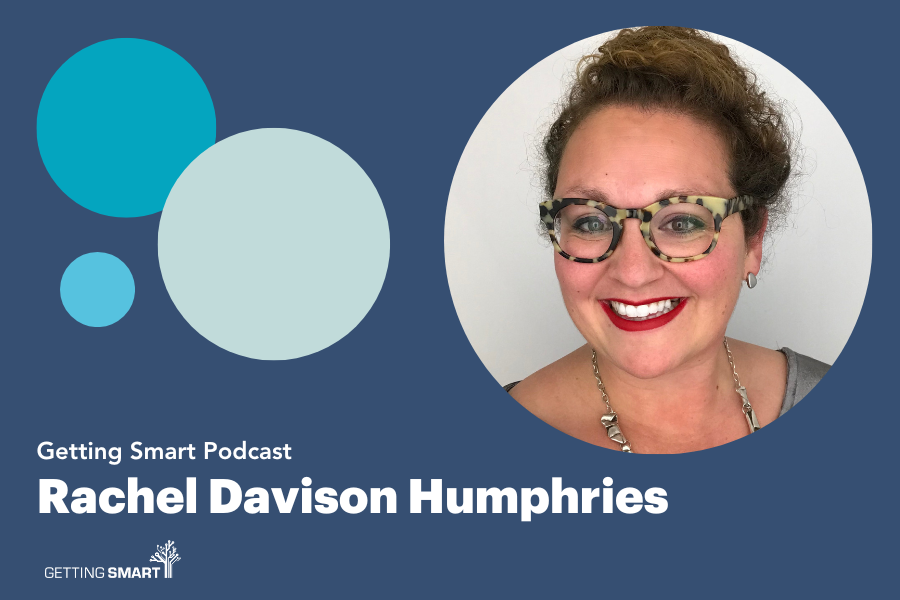
In this episode of the Getting Smart Podcast, Tom Vander Ark sits down with Rachel Davison Humphries, Senior Director of Civic Learning Initiative at the Bill of Rights Institute. They discuss the urgent need for robust civics education amidst a rapidly evolving socio-political landscape. Rachel emphasizes the role of civics in strengthening community ties and fostering democratic dispositions in students. The conversation also explores innovative ways to integrate civics across curricula, the state of civics education, and the invaluable resources provided by the Bill of Rights Institute to support teachers. This episode is a must-listen for educators, administrators, and anyone passionate about preparing students for active and informed citizenship!
Outline
- Introduction to Civics Education
- The State of Civics Education
- Integrating Civics Across the Curriculum
- The Role of the Bill of Rights Institute
- Advice for Civics Teachers
Introduction to Civics Education
Tom Vander Ark: Women’s rights, gun rights, presidential immunity, privacy, content rights—all interpreted through a dynamic definition of originalism. It’s the summer of 2024, and a good time to talk about civics education. You’re listening to the Getting Smart Podcast. I’m Tom Vander Ark, and I’m joined today by Rachel Davison Humphries. She’s the Senior Director of Civic Learning Initiative at the Bill of Rights Institute. Welcome, Rachel.
Rachel Davison Humphries: I’m so excited to be here. Thanks for having me, Tom.
Tom Vander Ark: It is a good time to talk about civics, isn’t it?
Rachel Davison Humphries: Civics is hot.
Tom Vander Ark: This is kind of a softball, but is civics education more important than ever?
Rachel Davison Humphries: I think yes. One of my absolute favorite quotes about democracy and civic education is, “Democracy needs to be born anew with every generation, and education is its midwife.” And I think that as we live in a more and more isolated set of communities, we need to have these ties that bind us to become stronger and stronger, and that’s where civic education comes in.
The State of Civics Education
Tom Vander Ark: Let me back up and zoom out, Rachel. What’s your take on civics education right now? What’s the health and the sort of distribution of quality out there?
Rachel Davison Humphries: I think you really have to think about it across the country. I work at the Bill of Rights Institute. We’re a national organization. We operate in all 50 states, plus Mauritius and occasionally the Bering Strait. We’re all over the place. And I think you really do have to think about it state by state and region by region. There are some states that have taken on really strong initiatives to support civic education and history education in new and interesting ways, and then there are other states where it’s still languishing, and they’re really still trying to find their footing. But overall, across the country, I would say that you’re seeing more of an understanding that we’ve let our history and civic quality of education lapse in the U.S. Our focus on STEM for the past 40 years has really created a situation where we’ve lost the foundation of what it means to build American citizens in our schools. And so I think that there’s a way in which people are opening up to that being an urgency across the country in different places more energetically than others, but really we’re seeing a real national energy towards civics and history that I would say wasn’t there 10 years ago.
Tom Vander Ark: We are in a transition from, I would say, 30 years ago when I was a school administrator, there was still maybe the beginning of the end of a knowledge-based approach where there was a body of knowledge that we wanted to memorize and regurgitate, and it was the beginning of a shift towards mindset, skillset—let’s maybe call it active civics. Is that a movement, and is it good or bad?
Rachel Davison Humphries: I think that when you’re focused too much on content, when it becomes the only thing, and it’s all memorization, then you lose a lot in developing the dispositions and habits that are necessary for democratic citizenship, right? If all you’re doing in history and civics class is sit and get, then you’re not going to have space in the classroom to practice those essential qualities that allow you to be a citizen. You’ll know what it means, but you won’t have practiced it. And on the other end, if all you’re doing is practice, if all you’re doing is like the techne, then you’re headless. You don’t know the common story, the narrative that binds us together. You don’t have a common language to speak to each other about the things that are important in your community. And so I think there’s always that push-pull; it’s a pendulum. I do think that it swung in the early 2000s, mid-2000s, it really swung into the skills, and now we’re seeing it draw back with a lot of the standards that are being developed. We’re seeing it draw back with a lot of the school choices, a lot of the school movements that are coming up are much more content-focused. And so yeah, I think it’s always a pendulum between wanting to make sure that we are active in our communities and then also wanting to make sure that we’re informed citizens. But yeah, I would say that the pendulum is swinging back towards center from a more focus on just skills building as being the essential, definitely.
Integrating Civics Across the Curriculum
Tom Vander Ark: How would you like civics education to show up in school? Is it a class that you hope is taught well, or is it more than that?
Rachel Davison Humphries: I mean, speaking from my own perspective, I think it’s definitely more than that. One of the things I think about a lot is that there needs to be an understanding that civics is a way of thinking about your fellow classmate or your fellow colleague or your fellow subordinate or your fellow principal. It’s a way of thinking about the nature of the individual and its relationship to the group. And so when you think about civics, it really should be everything. I used to teach a session called “Civics Across the Curriculum,” how every course can integrate civic knowledge and understanding with things as simple as making choices about snacking in the classroom, right? It’s really hard to teach how to be a free person in an authoritarian environment. And many classrooms are designed as authoritarian environments where you have a single voice making the decisions and then the subordinates following the rules. How can we create school environments where that is present when it needs to be, because obviously there are times where a teacher just needs to have control of the classroom, but where are the spaces where you can also let the students cultivate their democratic skills of leadership, collaboration, disagreement across difference? And why not let them make those choices in those constrained spaces and use the skills of negotiation that are necessary as they move out into society? And that can start very early. That can be early elementary. And then you really have civil society as a practice space for students in the classroom where they’re developing all of those skills all the time. The famous line from Tinker is that schools are the nurseries of democracy, right? They have to practice our skill set in the schools. But if all the rules are already set and all the authority is in the adults, where’s the space for that practice?
Tom Vander Ark: It’s a beautiful answer. I guess it, for me, brings forward not just a really well-taught civics class, but that also suggests that there ought to be some knowledge, skills, and dispositions that show up in a portrait of a graduate or a portrait of a learner. We’re seeing thousands of school systems really rethink their learning goals and often expressing citizenship as one of those key competencies that could be cultivated through culture and skill building in a lot of different classes, not just in civics.
Rachel Davison Humphries: Absolutely. And I think by having a class that absolutely focuses on this, you get a lot of the mechanism, right? You learn Robert’s Rules of Order, or you learn governance structure, which is necessary because that’s part of the system in which you live, and that’s what the civics course is for. But the skills, habits, dispositions—that has to come through practice, and that can come through a school culture. And I think the portraits of the graduates are a great kind of indication that people are thinking about this.
The Role of the Bill of Rights Institute
Tom Vander Ark: I mentioned before we started recording, I’ve been going down the Supreme Court rabbit hole on what’s going on with this interesting Supreme Court that we have. They’ve redefined how we use and interpret the Constitution, and we’re into a second, maybe third version of originalism in a refreshed way to interpret the Constitution. And that’s being applied in interesting ways to women’s rights and gun rights. And I guess I was just struck last night while I was listening to another one of these deep dives that it’s a really hard time to be a civics teacher. When the Supreme Court can’t decide on how to interpret the Constitution, what the heck is a civics teacher supposed to do? Isn’t it a really hard time to be a civics teacher?
Rachel Davison Humphries: Oh, I would say it’s some of the hardest. I imagine that it was really difficult during periods of war, but other than that, this would probably be one of the harder times—the past 10 years, eight, 10 years—for civics and history teachers, just because teachers are people. You’re dealing with your own emotional reaction to what’s happening in the communities that you care about, in your state, in your country. And then also having to hold space for the students to just experiment with their voice, right? Where they say things that you’re like, “How could they even?” But that also is, for many history and civics teachers across the country—so the Bill of Rights Institute has a network of 75,000 history and civics teachers that we engage with across the country. Like I said, we’re in every state. And we are hearing from our teachers that yes, it’s hard, but it also makes space for this incredible conversation that they can have with their students. For the first time, there was this Chevron clause a couple of years ago that was in the news, and so students were bringing it to their teachers. And because things are so present, it makes the classroom much more dynamic. And so teachers are able to tap into what’s happening out in the world in ways that they weren’t maybe as much able to do when things were a little calmer. So there’s the flip side of the coin where yeah, it’s really hard, but at the same time, that means the students are a bit more aware, which makes tapping into their interest a little bit easier. That said, the other thing to think about when we talk about being a civics teacher being really hard is the huge turnover in teaching that’s happened post-COVID. I know you’ve talked about it in some of your other episodes. But the fact that so many teachers, this is going to be their first election cycle or their first big election cycle is something that we, as teachers, both teachers, colleagues, and administrators, really have to think about. For a lot of teachers in the classroom, this is going to be the first time they’re dealing with something of this magnitude this election cycle.
Tom Vander Ark: That’s a beautiful reminder, Rachel. I guess I want to dive into how the Bill of Rights Institute presents itself. I was on your website and I saw, “Oh, we value original documents.” And I thought, “Oh, these guys are right-wingers.” And then I saw another screen that talked about equality and I thought, “Oh no, they’re leftists.” How do you deal with that when the families of the kids that are served in the schools that you work with jump so quickly to a tribe? What tribe are you in, and how do you try to come to serve the world?
Rachel Davison Humphries: That’s a great question. Our mission actually changed, I think it was three years ago now, to be very simply that the Bill of Rights Institute teaches civics. We equip students and teachers to live the ideals of a free and just society. And I do think that mission throws people in both directions because they’re like, “Wait, what do you mean?” But what do you mean?
Tom Vander Ark: Which one do you really believe this?
Rachel Davison Humphries: Which one do you mean? And I think that’s a healthy space, right? America is a pluralist, diverse society. The Bill of Rights Institute is a 501(c)(3) nonpartisan nonprofit educational entity. We are donor-supported. We don’t accept federal funding. So again, it creates some space for us to say, “Look, we’re a principle-driven organization.” The principles that we value are constitutional principles and civic virtues. You can find all of them on our website. There are other organizations that have other design frameworks that have other values that they support in their curriculum. Ours are founding principles of natural rights, consent of the governed, Republican government, limited government, the Bill of Rights, and then virtues like courage, honor, justice, moderation, responsibility, respect. Other organizations have other design frameworks. These are ours. We also, the other thing we do is we put a statement of academic integrity on every page of our website that shows that yes, even though we’re donor-supported, that doesn’t influence the choices we make when we get scholars to contribute to our work and the work we design. So I think it is a little bit hard to peg us because we are very intentionally nonpartisan, not bipartisan, but nonpartisan in the resources that we create. But we’re very principles and values-driven. And so we used to hand out—we regularly give out hundreds of thousands of copies of the Constitution and the Bill of Rights, a pocket Constitution, and we’ll give them out at conferences. Depending on what’s going on, the people who take them will be very far right or people who take them will be very far left. And that’s a win. When everyone says, “No, I can use the Bill of Rights Institute stuff because I know what I’m getting. I know its source. I know that it’s reputable and credible. And yes, they have a perspective, they’re principles and virtues-driven, but I know what it is, so I don’t have to worry about it.” And we’re very intentional about that as an organization. We had a resource that we published two years ago called “Life, Liberty, and the Pursuit of Happiness,” which was this massive U.S. history textbook, and we had 96 different scholar contributors to that textbook from across the political spectrum. Viewpoint diversity is essential for a thriving democracy. And so we want to make sure that our students and our teachers see multiple perspectives while being exposed to those core principles and virtues.
Tom Vander Ark: Since you’re a defender of the Bill of Rights, this is a random aside, but should it be easier to change the Bill of Rights? It seems like it’s pretty darn hard to change at this point. Is that a good thing or…?
Rachel Davison Humphries: The slowness, I always used to tell my students, it’s a feature, not a bug. The slowness is important because the tyranny of the majority is a danger in every moment. And you would never want that majority to be able to very quickly assume power. And I think that the checks and balances, though they’ve been eroded in a variety of ways—18th Amendment, we can have a long conversation about that—but those checks and balances are essential to make sure that it really is the will of the supermajority. And I’m not uncomfortable with that slowness.
Tom Vander Ark: So what do you guys do?
Rachel Davison Humphries: So BRI, like I said, we have a network of about 75,000 teachers, and we functionally do two major things. We create resources, and we create experiences. We have over 5,000, I think close to 5,000, resources on our website that are all freely available for teachers. We’re entering the elementary grade. So BRI has been around—the Bill of Rights Institute has been around since 1999. And in all that time, we’ve really focused on middle and high school content and middle and high school resources. That was just our bread and butter. But we’re finally entering elementary, and we’re launching a set of third through fifth-grade history and civics resources, I think in July or August. August, I believe, which is very exciting. So we create resources that are freely available for teachers, and then we also offer professional development. So we have free programs around the country. We bring a scholar, we offer stipends, we work with districts, we work with local partners, museum partners to bring high-quality civics and history support to educators around the country. And then we also offer a little bit of student programming. I have a student fellowship, we have our civic engagement contest, our national civic engagement contest, a couple of other small contests, but dominantly the work we do is—we’re a teacher service organization. We serve teachers in their communities and across the country with resources and opportunities.
Tom Vander Ark: Teachers can find those resources at BillofRightsInstitute.org. Is that right?
Rachel Davison Humphries: Yep, all of it. Everything is all on the Bill of Rights Institute website. The search bar is your best friend. So if you just go up to the search bar and literally type anything that you’re teaching tomorrow, press enter, and everything we have will come up on the website.
Tom Vander Ark: We’re talking to Rachel Davison Humphries. She directs civic learning at the Bill of Rights Institute. When I saw you at ASUGSP, you mentioned “My Impact Challenge.” What is that?
Rachel Davison Humphries: I’m so excited. And I’ve followed you for a long time, Tom. I know what an innovator you are and how you support all the different ways in which we’re trying to make society better through education, right?
Tom Vander Ark: Geeking out over community projects, and this sounds like one.
Rachel Davison Humphries: Exactly. So My Impact Challenge is a national civic engagement contest that offers students prize money like a science fair for civics. That’s how you should think about it. A science fair for civic engagement, social entrepreneurship, where young people who are doing programs in their communities can submit those projects to the Bill of Rights Institute. There’s a contest, and they can win $40,000 worth of national prizes. The top prize is $10,000. And the vision is any project that’s supporting their community can be submitted. So it can be a charitable project, it can be a government initiative, or it can even be a social enterprise that students have put together that is a business that has a social mission. And all of those projects are then—we’re finally, we’re in year three, we just wrapped year three. So we have about 500—a database of about 500 projects that we’re going to publish next year. So young people from around the world can see social solutions that young people have designed and gain inspiration from them.
Tom Vander Ark: I love that. When does it happen? Is it like juniors and seniors?
Rachel Davison Humphries: It’s actually open—it’s open to 13 to 19-year-olds, and we have courses that teachers are running on civic engagement or social entrepreneurship, and the whole class will do different projects. So students ages 13 to 19, they can submit in groups of up to five. So it’s not a whole class project. It really is an individual or small group project. But we’ve had everybody from FFA kids to just church groups to classrooms submit projects and win.
Tom Vander Ark: That’s awesome. So it could be in class, it could be extracurricular, it could be—what we’d call it unbundled. It could happen in a boys and girls club or anywhere where two or three are gathered.
Rachel Davison Humphries: Anywhere where three or more are gathered. Yeah. The other thing is that we have a curriculum. So if teachers are interested in helping their students design a project, we have a design thinking-based curriculum that’s six modules long that looks at all those aspects of civil society, introduces them to kind of design thinking framework, but also looking at what is the role of government? What is the role of charity? What is the role of the entrepreneur in American society? And how can I think about each of those as solutions to a social problem? And then they submit a project report. So they do the project. This isn’t a pitch competition. This is real projects the students are doing in their communities. It has to exist. They submit their project with some documentation. And then, this is tying it all together—they have to submit an essay that ties their project to a constitutional principle or virtue and really embeds their project in the American project of civil society and self-governance.
Tom Vander Ark: That is so awesome. How can we make sure that every American youth participates in this?
Rachel Davison Humphries: So we work in districts where they have had the whole district do it, right? There have been whole districts who have said, “My Impact Challenge is going to be the curriculum for the district, and we’re going to get these projects into the community.” We’ve also had a lot of community groups take it on, and we’re starting to have state fairs. So this year, we had four state fairs where we have an additional contest in a state. So Utah is the most recent one where any student who submitted in Utah not only was eligible for the national prize, but they were also invited to come to Salt Lake City, Orem, and have another contest, an in-person fair, which very much felt like a science fair. We had about 20 different projects show up and had an event with kids, and it was a leadership conference. And we’re trying to grow—if you know anybody who wants to reach out to me, you can put my email up, you can go to MyImpactChallenge.org. It will send you right to the My Impact Challenge website on the Bill of Rights Institute website, or just search for it online, My Impact Challenge, My Impact is one word, and Challenge is a second word.
Tom Vander Ark: Rachel, we’re pretty bullish here at Getting Smart about artificial intelligence, particularly Gen AI, and particularly using Gen AI to frame problems and to deliver value to their community. This seems like a framework where thoughtful uses of Gen AI could help speed and improve student research, problem finding, and framing, and also helping them deliver value to their community. Do you buy any of that?
Rachel Davison Humphries: I do. I was on a podcast where I spoke about social studies, civics, and AI. I think there’s a huge opportunity. And I think the AI revolution really makes civics and history and civic engagement that much more important. But part of what’s happened is, in this quest for STEM dominance, we’ve lost our kind of philosophical humanitarian exploration in classrooms. And with AI opening up so much more time, I think we can make classrooms that place where those conversations can happen again. And I love using AI as a—I call her an executive secretary—where it’s just ginning up ideas, the prompt engineering that you can do to help quickly generate examples or things you can respond to or scenarios is a great use of the tool. And then you take that, and you put it in the real world and see what happens, and you react to what’s happening in the real world. But initiating with the kind of prompt engineering is a great way to just get the juices flowing, especially for kind of complex social issues.
Tom Vander Ark: That is super exciting. We haven’t really talked about some of the emerging issues because we’re talking the night of the first presidential debate. I’m thinking a lot about the next five months are likely to be full of things that we’ve never seen before, with a new round of deep fakes and new forms of synthetic content, both audio and shockingly video that looks a lot like one of the two candidates or advocates for those candidates. We’re just into a brave new world of both campaigning and educating about campaigning. So it just strikes me that your resources and this challenge are both super timely for this interesting period. I guess where I was headed with that wandering comment was that it feels like the coming together of civics education and digital literacy—I just have never been more important than ever. I’ve been advocating for literacy for a lot of years, but we need to do these things together—combine media literacy and civic literacy. And that feels like a new urgent priority, right?
Rachel Davison Humphries: I think it is. And I think it’ll finally push civic education into a field of research, which it hasn’t had the opportunity to really solidify around yet. There are a lot of great researchers—Danielle Allen and David Levine and a lot of great researchers who have been doing this work for a long time. But I do think that yes, this moment where there’s an urgency now to integrating the learning and the understandings and the teaching pedagogies that will push this into classrooms more quickly, I think you’re definitely seeing that. And the next five months are going to be really hard. We talked at the beginning about the difficulties for civic educators, and living in a post-truth world must be really hard for teenagers, right? Like, it just looks like navigating your own truth is so hard at that age. But then having to question literally everything—I can’t imagine what that would be like. As adults, as tired as we are of all of it, I think something to think about is that this is the first time these kids are going to go through an election cycle, right? Thirteen to seventeen-year-olds today were eleven to fourteen-year-olds last time. And so they’re going to need our tender support through this. As tired as we’re going to be, I think it’s something to consider that it’s mind-bogglingly complex for these young people, and they’re going to turn to us. And we have the opportunity to be there for them.
Tom Vander Ark: Maybe complexity squared, right? Given both the subject and the medium are both challenging right now. So as a civics nerd, do you relish the three-year-long presidential campaigns that we have here, or do you wish that we were like the UK where you call for an election, and you have it three weeks later, or countries that have a 14-day election cycle? Which camp are you in?
Rachel Davison Humphries: I’m in the much shorter election cycle just because I think that it shouldn’t be as big a part of our lives. All politics is national now, and just as much as I respect our democratic processes and I think they’re essential—and I’ve been an advocate of self-governance my entire career, right? That’s all I’ve ever worked towards. What is the pedagogy of a free society? What does it mean to teach self-governance? That should be done in the smallest of the consensual circles of your control. These huge national things…
Tom Vander Ark: Our campaigns have invited enormous investment, and just given our campaign laws and the variety of ways that people are able to contribute now, we have made this big business as well as a protracted business. So maybe the students that we’re educating today can help us tidy this up in the years to come.
Rachel Davison Humphries: That’s the hope. Teaching is an act of optimism. We do it because we hope it’ll be better in the future. And I think every election cycle is a moment for us to keep that optimism alive.
Advice for Civics Teachers
Tom Vander Ark: We’ve been talking to Rachel Davison Humphries. She directs civic learning at the Bill of Rights Institute. It’s BillofRightsInstitute.org. MyImpactChallenge.org is a very cool project that they sponsor. What’s the cycle on that? Is that…
Rachel Davison Humphries: So every year, it opens September 11th, National Day of Service, and it’ll close usually mid-May, about two weeks after AP testing.
Tom Vander Ark: All right, let’s close out with a word of advice for civics teachers and teacher leaders. And also, if there are people or groups that are important to you and the Bill of Rights Institute as partners or inspiration, welcome a shout-out for those. So first, closing thoughts for civics teachers and teacher leaders going into the fall.
Rachel Davison Humphries: Fill your cup. That’s my word of advice. You’re going to need a tribe. You’re going to need a community. There are lots of them out there. Go to your council events, go to your PD events that are in person, and really fill your cup because it’s hard, and it’ll be that much easier if you have a community to lean against. That would be my big go-to: your conferences, go to your PD events, and really build those connections because that’s what will buoy you. And we have a lot of friends that do that work. So BRI is around the country. We go to lots of the National Council for Social Studies Conferences, National Council for History Education Conferences, a lot of the civics coalitions are now having conferences around the country. And then we’re also members of a lot of different organizations. I’ll share those with you—the aforementioned ones, but also the Educating for American Democracy Coalition or the Civics Renewal Network. If you’re not familiar with them, jump on as many email listservs as you can to find out what’s happening in your community, but really find a tribe that will buoy you through the next six months, four years, 10 years as we transition into this brave new world of the digital age that’s coming. Civics and history is in a bit of a hot seat. And so it’s nice to be in a community of people who understand what you’re working on and can support you to be the best civics teacher you can be.
Tom Vander Ark: Any people or partners you want to give a shout-out to?
Rachel Davison Humphries: There’s a lot of really interesting research happening right now on civic engagement and civic learning. I’d keep an eye on some of the research institutes—the work of Danielle Allen, David Levine, or Daniel Allen’s Circle Democratic Knowledge Project. All those research institutions are doing some really interesting work. And if there’s one in your community, you could really plug into something on the ground floor.
Tom Vander Ark: Plug in, or invite your students through…
Rachel Davison Humphries: Or invite your students to plug in, exactly. There’s a lot of fun energy in civic education right now across the country. And just keep your ears open for opportunities. There are so many good people doing good work. And if you ever want to reach out to us or me, I’ll give Tom my email. He can put it on the podcast, and I’d be happy to point you in the right direction.
Tom Vander Ark: You can find Rachel at BillofRightsInstitute.org. We’ll include her links and email in the show notes. Rachel, thanks so much for being with us.
Rachel Davison Humphries: It was my absolute pleasure. Anytime. I’m so grateful for the work you do to support education across the globe. So thank you, Tom, for having me.
Tom Vander Ark: Buckle up for five more months of this election cycle.
Rachel Davison Humphries: We’ll get there. We’ll get there. It’ll be fine.
Tom Vander Ark: Until next week, keep learning, keep leading, and keep promoting civics education. See you next week.
Rachel Davison Humphries
Rachel Davison Humphries is the Senior Director of Civic Learning Initiatives at the Bill of Rights Institute. She leads the team that leads outreach initiatives, develops new programs and products, fosters close relationships with BRI’s network of 50,000 teachers, and designs marketing campaigns. Before joining BRI in 2016, Rachel worked for almost a decade as an educator, mentor and trainer in middle, high school, and university environments, and continues to consult on various educational projects. Rachel earned her B.A. in Liberal Arts from the Great Books program at St. Johns College, in Annapolis, Maryland, her teaching certificate in Adolescent Education from the Association Montessori Internationale, and her M.A. in Learning, Design, & Technology at Georgetown University.


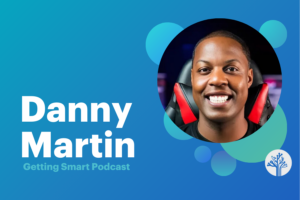

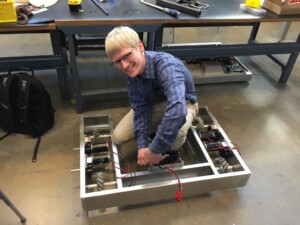
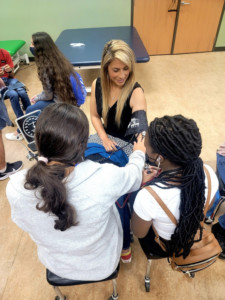
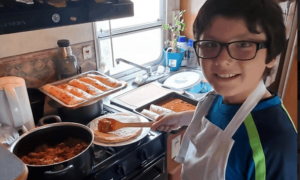

0 Comments
Leave a Comment
Your email address will not be published. All fields are required.